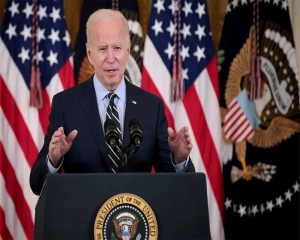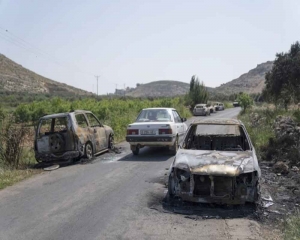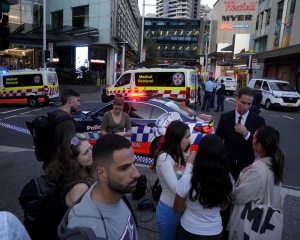The International Women’s Day is celebrated on March 8. The theme for this year is 'Think equal, build smart, innovate for change.' The theme focuses on innovative ways in which we can advance gender equality and the empowerment of women, particularly in the areas of social protection systems, access to public services and sustainable infrastructure.
Total population of Odisha as per 2011 Census is 41,974,218 of which male and female are 21,212,136 and 20,762,082 respectively. The sex ratio in Odisha declined drastically from 1086 in 1921 to 972 in 2001.
However it has improved marginally to 978 as per 2011 Census data. The decline in Child Sex Ratio (CSR) is the main cause of concern as it continues to decline consistently from 967 in 1991 Census to 950 in 2001 Census to even lower 934 as per the 2011 Census.
The male literacy rate in the country is 82.1 per cent, female literacy lags at 65.5 per cent. As per 2011 census, the literacy in female population in Odisha is only 64 per cent compared to about 82 per cent in case of male population indicate gender gap of about 18 per cent. Female work participation is considered as an important indicator of women’s involvement in economic activities.
The female work participation rate is very low in comparison to male counterpart for total, rural and urban population. The workforce participation rate of males and females in the country is 54.4 per cent and 21.9 per cent, respectively. The workforce participation rate of males and females in Odisha is 56.11per cent and 27.16 per cent, respectively. The educational backwardness of girls has been a consequential cause of gender inequality in India. Female literacy is important for the development of the individual as well as society and at the same time it reduces gender inequality.
Gender equity and empowering women and girls are critical goals for India. The National Mission for Empowerment of Women (NMEW) was launched by the Government of India on International Women's Day in 2010 with the aim to strengthen overall processes that promote all-round development of women. The Government of Odisha has implemented all the welfare schemes framed by Government of India as well as the State has been giving all the priority to the women as per the Constitution of India.
The 74th Constitution Amendment Act, 1992 for the first time provided one-third representation to women in urban local self-government institutions. The 73rd Amendment to the Constitution of India Act has drastically changed the Indian political process, with far reaching consequences for Indian federalism, decentralisation, gender equality, social justice, grassroots democracy and people’s participation in planning for development. Women are the indispensable part of the society.
However, many women have lived with fear of being unsafe at certain times of the day and in certain places. This has a huge impact on women’s ability to engage in employment and community participation, social and leisure activities. Communities can take up responsibilities and play a role in improving the situation of women by designing safe public spaces for women.
By the process of empowerment, women can challenge gender discrimination against all the institutions and structures of the society. It is a process to achieve self reliance, liberation, sense of pride and courage to fight for social injustice.
Women lack access to decent work and face occupational segregation and gender wage gaps. Urban spaces are not always safe for women, constraining their right to move freely. Women who are poor and living in urban slums face particular challenges. There are no proper access to clean water, improved sanitation and durable housing for them. The lack of safety in the provision of public services puts women in a situation of vulnerability, and limits their rights in the cities.
Gender inequalities persist and women and girls benefit less from urbanisation and urban spaces than men and boys. In fact, women and girls in cities face a range of specific barriers and vulnerabilities in the form of gender based discrimination: gender inequality, violence against women, poverty, unequal participation in public and private decision-making as well as, barriers to education, employment, housing and basic services.
Creating safe and inclusive spaces which respond to the needs of women and men is imperative for increasing social cohesion and sustainable urban development. All cities should be inclusive, convenient and safe cities for women by helping women fully access and participate in the social, cultural, economic and political life of the city. The current development of urban infrastructure and the built environment needs to be redesigned to promote greater gender equality in the use and benefits of urban space. Urban development processes must address these inequalities and ensure that women can equally contribute to and benefit from urban development. Gender is an important consideration when planning and designing essential services in communities. Often, when essential services are badly planned or missing, women and girls fear to use those spaces. While planning and designing safe public spaces for women, planners, designers and architects place special focus on lighting, landscaping, visibility, pedestrian traffic, street furniture, signage, security personnel, proximity to other public spaces, proximity to emergency services, and access to public transportation.
Neighborhoods with better linkages to markets, schools, child care, health, education and transport services can all increase women's abilities to be more productive and participatory. Each of these areas should be given particular consideration from the perspective of the women and girls who use public spaces. Women’s ideas and experiences are imperative which may influence the design and implementation of the innovations that shape our future. Only when a woman feels safe, she will be able to deliver her best performance. This will increase women’s access to education, skill development and employment for better future prospects.
(Dr Praharaj teaches at Department of Architecture, College of Engineering and Technology, Bhubaneswar)

























